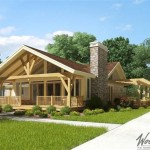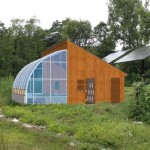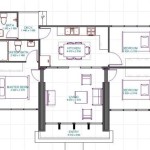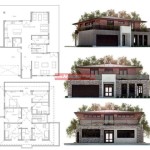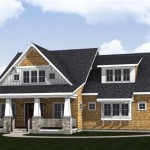Discovering the Essence of Frank Lloyd Wright House Plans: A Journey into Architectural Ingenuity
Frank Lloyd Wright, widely regarded as one of the greatest architects of all time, left an indelible mark on the world of architecture through his groundbreaking concepts and meticulously crafted house plans. His designs transcended mere aesthetics, seamlessly integrating with their surroundings and prioritizing functionality and harmony with nature. In this article, we will delve into the essential aspects of Frank Lloyd Wright house plans, exploring the key elements that define their timeless appeal and enduring legacy.
At the heart of Frank Lloyd Wright's design philosophy lay the concept of organic architecture, which championed the harmonious integration of buildings with their natural surroundings. Wright believed that structures should not simply stand in contrast to nature but rather merge seamlessly with it. His house plans often featured expansive windows that blurred the boundaries between indoor and outdoor spaces, inviting nature into the living areas and creating a sense of connection with the environment.
Frank Lloyd Wright's house plans emphasized open concept living, breaking away from the compartmentalized spaces common in traditional architecture. He believed that fluidity and continuity of space promoted a sense of spaciousness and encouraged interaction among occupants. By eliminating unnecessary walls and partitions, Wright created open, airy living areas where natural light could penetrate deeply, fostering a harmonious and inviting ambiance.
Geometric forms played a pivotal role in Frank Lloyd Wright's house plans. He masterfully employed clean lines, geometric shapes, and symmetrical compositions to create visually striking and balanced structures. Wright's designs often incorporated rectilinear shapes, such as squares and rectangles, which he believed exuded a sense of order and stability. However, he also experimented with more organic forms, such as curves and spirals, to introduce a touch of fluidity and dynamism into his creations.
Frank Lloyd Wright placed great emphasis on the materials used in his house plans. He often opted for natural materials, such as wood, stone, and brick, which complemented the organic nature of his designs and enhanced their connection with the surrounding environment. Wright believed that natural materials aged gracefully, acquiring a patina that reflected the passage of time and added depth and character to the structures.
Natural light played a crucial role in Frank Lloyd Wright's house plans. He meticulously designed windows to maximize the influx of natural light and create a sense of openness and connection with the outdoors. Wright's windows were often strategically placed to capture specific views and create dramatic lighting effects that transformed the spaces throughout the day. By embracing natural light, Wright aimed to enhance the occupants' well-being and foster a stronger connection with the changing seasons.
Water features were another defining characteristic of Frank Lloyd Wright's house plans. He believed that the presence of water added a sense of serenity and tranquility to living spaces. Wright skillfully incorporated ponds, pools, and fountains into his designs, often positioning them in courtyards or near living areas to create soothing and contemplative spaces. The sound of flowing water helped to mask unwanted noise, providing a calming and restorative environment for the occupants.
Frank Lloyd Wright's house plans continue to inspire and influence contemporary architecture worldwide. His emphasis on organic design, open concept living, and the use of natural materials has shaped the way architects approach residential design. Wright's legacy extends beyond individual structures; he also played a pivotal role in developing architectural education and promoting modernism in the United States. Today, many of his iconic houses, such as Fallingwater and the Robie House, serve as museums and architectural landmarks, showcasing his enduring genius and inspiring generations of architects to come.

Frank Lloyd Wright Design Homes Usonian

Frank Lloyd Wright Inspired Home Plan 85003ms Architectural Designs House Plans

Frank Lloyd Wright Home Plans Homes

Frank Lloyd Wright Inspiration 20092ga Architectural Designs House Plans

Frank Lloyd Wright Inspired Home Plan 85003ms Architectural Designs House Plans

Frank Lloyd Wright S Usonian Homes N Design Review

Frank Lloyd Wright S Plan For His House And Studio In 1889 Oak Park Loyd Houses Homes

Three Frank Lloyd Wright Unbuilt Houses Brought To Life As Digital Reconstructions

S First Frank Lloyd Wright House Blocked By Planning Inspector Archdaily

Frank Lloyd Wright House Floor Plans Historic American Homes Brand


